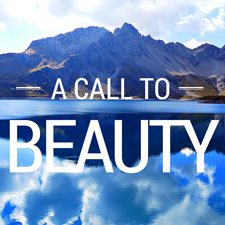Ok, my post title is a little tongue-in-cheek. I was initially surprised to see some of my message encapsulated in one of this month’s Professional Photographer magazine articles, but I think it’s wonderful that the idea of differentiating authentically is showing up elsewhere in the photography industry. Seems like the timing for this message is right on…
 When I first received my copy of Professional Photographer this month, I saw the cover slug: “How to broadcast the brand of you.” Oh no, I thought. Not another platitudinous article about how you are your brand or your brand is you. That’s such an oversimplification, and I hear it way too often. We are much too complex to be our brands, but elements of who we are do need to be incorporated into our art and business if we want to differentiate authentically. The key is figuring out how to distill all of our fabulousness into a brand, but more on that later… When I first received my copy of Professional Photographer this month, I saw the cover slug: “How to broadcast the brand of you.” Oh no, I thought. Not another platitudinous article about how you are your brand or your brand is you. That’s such an oversimplification, and I hear it way too often. We are much too complex to be our brands, but elements of who we are do need to be incorporated into our art and business if we want to differentiate authentically. The key is figuring out how to distill all of our fabulousness into a brand, but more on that later…
I flipped through the magazine’s table of contents and saw Kimberly Wylie’s “Living the dream: Finding your personal style” right before the branding piece, and I decided to read that first.
Here are the highlights for me:
- “When you’re trying to distinguish yourself from others in a competitive landscape, being unique is a critical component of success,” she writes. Yes, exactly!
- The methodology she outlines in the article has similarities to the one I’ve been developing on my own since last fall, the Art Aligned framework. First, she suggests that you look for trends in your life, which is what I help people to do in the You and Motivations modules of my workshop. However, it was unclear how she moved from a list of personal attributes to the realization that she values “client relationships” and “telling a story with expression,” and I think people who are new to the concept would be confused as to how to do the same for themselves. I feel like people need guidance in identifying what elements of themselves are critical to their work, which is something I focus on in my workshop and 1:1 mentoring.
- Next, Kimberly asks that you look at what inspires you, which is similar to my own inspiration review assignment. Cool, huh? Because of the brevity of the piece, she can’t really delve into how much soul searching can be required to do this, but I love that she shares the idea.
- She then suggests that you trust your instincts: “Trust your own desires for your style, business and life. If you have an idea for doing something that no one else is doing, go for it! These are the ideas that make you uniquely you. It might be scarier than staying with the pack, but the benefits might be much greater.” Love it!
- She also encourages you to create a work situation that serves you. “People who can identify the common threads in their life and incorporate them into their work and business identity naturally create a happier workplace for themselves. You will see your creativity soar when you’re working in an environment that is natural to you.” Yes, and staying in the creative flow and creating a happy workplace ensures that you are serving yourself as well as your customers. It will also help keep you from burning out as I did. Good one!
Overall, I think Kimberly did an excellent job of outlining authentic differentiation, through acknowledgment of who you are and your personal motivations. Where I think she missed the mark is in not sharing how the development of a vision for your work helps to serve as a guide to your stylistic development.
Knowing who you are and what your personal motivations are feeds naturally into creating a vision for the role your work will play in the world. Clarifying your vision for yourself and elucidating it for your clients helps you and them understand where you’re coming from and what you do, and also helps you to choose appropriate stylistic elements that reflect your vision and motivations.
But, overall, I think the article is a good one. Thanks, PPA, and Kimberly!
Next, I turned to Stephanie Boozer’s “The brand of you: How to tap into and convey your unique mojo.” She started out on the right track, sharing how Nashville photographers Zach and Jody Gray decided to “capitalize on who we are” in developing their brand. Great, I thought, how do you do that? Unfortunately, the focus was brand icons, not branding.
Folks, your brand icons — logo, colors, packaging, website — are not your brand. As branding and marketing expert Maria Ross writes in her book, Branding Basics for Small Business:
Brand is the core experience, the story, and the essence of your business. It’s your company’s reputation, personality, and reason for being — all rolled into one package. Brand contains the promise you make to customers, the value your product or services provide, and the difference between you and your competition.
You convey your brand to your customers visually, verbally and experientially — through everything you say, show or do related to your business — but your message is the heart of your brand. Branding authentically means owning your own story, but unfortunately the article focuses on why several photographers chose their logo, colors or packaging.
Despite the focus on brand icons, there were still a few nuggets of wisdom to be found:
- Virginia photographer Katelyn James says, “People like consistency and relevancy, and I’m trying to offer both through my business.” I agree, consistency is key to establishing a brand that people recognize and remember.
- Part of developing your brand strategy is identifying the “interests, preferences and lifestyle of [your] ideal clients — where they’d shop, what blogs they’d read, what television shows they’d watch,” as Vancouver-based photographer Jamie Delaine suggests. Nice!
- Jamie also suggests compiling an inspiration folder, as Kimberly did. Must be something to that if we all agree, right?
So, there you have it. The PPA is copying me…or maybe the time is just right for the message of bringing your authentic self to your business and stepping away from the industry trend of commoditization. 😉
What do you think? Did you read the articles? Find anything particularly helpful or unhelpful?
Cheers,

The day came when the risk to remain tight in a bud was more painful than the risk it took to blossom. — Anais Nin
 Photo inspiration by Cassandra Rae How are you blossoming today?

One of the worst pieces of advice I ever got as a photographer was, “People prefer tender images of their children looking into the camera. What you want to shoot won’t sell.” And, even worse, for a while I believed it.
Here’s the truth: People’s aesthetics vary. If you want to create your art in a certain way, chances are there’s someone (probably many someones) out there who wants what you’re offering.
A while back, I was reading a blog post by commercial photographer Chase Jarvis. He asked readers to choose a favorite from two very different photographs he’d taken during his trip to Paris, and to tell him why their choice was better. I had an immediate and clear opinion, but as I scrolled through the responses, I was surprised to see that people were evenly mixed between the two photos.
That’s good news for all artists. It means that there is more than one path to success. There isn’t just one aesthetic that you have to subscribe to in order to have a successful career.
So, produce work that you love. If you do, you will attract your ideal customers, the people who will love your work as much as you do. Please, be loyal to your vision.
You won’t appeal to everyone, but that’s ok. If you do, you’re probably either too cheap or too boring. And who wants to be one of those?!
Cheers,

P.S. Just for fun, let’s try our own version of A vs. B.

Which is better, and why? Share your thoughts in the comments below. Photo A:

Or Photo B:

Last month, I announced my new baby to the world, to the sound of…silence. Immediately, my months of hard work spent designing and developing a workshop to support wedding and portrait photographers in identifying their unique vision and manifesting a differentiated style and brand seemed fruitless. As a friend said when we talked about it, “Kinda makes you want to pack up all of your toys and go home, doesn’t it?” Yep, I was right there.
Then I realized something. We all occasionally feel like no one cares about us or what we’re doing. And let’s be honest, often they don’t. We’re as guilty of getting wrapped up in our own lives and failing to pay attention to what friends and family are doing, much less what’s going on outside our inner circle, as everyone else.
And when you’re one little ol’ person trying to change an industry, as I am, the message can be even harder to get out there. As Mahatma Gandhi said:
First they ignore you,
then they ridicule you,
then they fight you,
then you win.
Yikes, so that means I’m just on the first step of this journey?! I still have ridicule and fighting to go. Ok, then…
…I guess the question is, “How do we persevere?”
Realize that you’re not alone in feeling this way. We all feel unsupported sometimes. And we feel alone in our aloneness, as if everyone else has endless support and we’re the only ones struggling. But that’s just not true. I remember looking at the popular people back in high school and thinking that their lives were perfect. And then I dug deeper. I listened to their stories of being ignored by their parents or dealing with eating disorders. I realized that no one’s life is perfect; everyone suffers. Thank goodness suffering, like everything else in life, is impermanent. “Tomorrow is another day,” as Scarlett O’Hara said.
 Feeling abandoned on the shore while everyone else lives the high life? You’re not alone. (Artwork inspiration by ARTindividual on Etsy) Understand that entrepreneurship can be a lonely journey, and that you will have to be strong to survive. As a solopreneur, you are the captain of your ship (and the first mate, the deckhand, the cook and the galley washer). Friends and family may be supportive, but often they won’t understand exactly what you’re going through, having never embarked on a similar path. Some may even appear unsupportive because they want to protect you from being hurt or to preserve the status quo. We each have to decide if our goal is worth the struggle, and remember our decision when times get tough. (Darn it, and just like that, I’m singing that old Billy Ocean song in my head.) Anyway…
Remember that almost nothing important and meaningful comes easily. This is a hard one for me to remember because, when I look back at other things I’ve accomplished in my life, I see them as easy and enjoyable. My husband assures me that is rose-colored reality, a remembrance of how wonderful being in the flow felt when I loved what I was doing, even when the work was challenging. Which brings me to…
Try to stay in the flow by doing things your way vs. how you think you should do them. A lot of people have a lot of advice on how things should be done if you want to be successful, but their success has little to do with yours. If something doesn’t feel good and keep you in the zone, then you might need to try a new approach.
Ask yourself if you want it [whatever it is] badly enough to keep going. Runners I know tell me that everyone hits a wall during a race — a time when they’re tired and want to quit — and they have to choose what’s more important, the immediate gratification of rest or the long-term satisfaction of achievement. We, too, must weigh the perceived value of winning our ultimate prize against the pain of our past and present. And don’t forget to…
Acknowledge the support you are already receiving. It can be easy to focus on the negative: the requests for assistance that go unanswered, the blog posts that get no comments, the subscriber list that seems stuck at 12 or 34 or 104. So we must consciously look for the positives. “Where have I received support or encouragement recently?,” we must ask.
Has my website traffic gone up? Yep, it’s increased 300% since last month! Have my friends posted on Facebook or Twitter about me? Yes! And two friends took the whole workshop as I was creating it, gave me amazingly positive feedback and also some good advice to make it even better next time. So, life’s actually pretty good, isn’t it? Yes, I think it is.
What about for you?
Cheers,

I heard a lot of interesting assertions working as a professional photographer. Here are a few of my favorite myths and the real truth behind them.
 Photographic inspiration by Dominic Alves Myth: If I copy what [insert name of successful photographer here] does, I’ll be successful, too.
Successful photographers are generally true to themselves. You are not that person; therefore, doing what they have done will not make you successful, only a poor imitation of the original. Who wants to be that?
Myth: You can charge more if you call yourself a boutique.
What does this even mean? I’ll tell you what it doesn’t mean: Buying marketing templates and packaging to make yourself look like a boutique studio and then doing nothing else differently. Boutique studios are high-touch, high-service experiences on every level. If you’re unwilling to or unsure that you can provide that level of service, don’t bother calling yourself a boutique. Even if you do, no one will believe you.
Myth: You just need to raise your prices and everything will work out fine.
Does anyone else find this piece of advice a little strange? Sure, you need to charge enough to cover your expenses and make a profit, but raising your prices when you’re competing on price is going to make you the loser. Yeah yeah, you’re not supposed to be competing on price, but how can you help it if your work is indiscernible from everyone else’s? The fact is clients will choose on price if you look the same as your competition. The only way to charge more is to provide a unique offering that people can’t get anywhere else, and the only way to do that is to differentiate yourself and market your work effectively.
Myth: Getting a certification will set you apart, and is a good way to brand yourself.
In photography, the image is king. Clients don’t care about certifications unless you need one to do business, as in the financial planning or accounting professions. If your work is good, having a certification won’t matter. However, if you need to improve your work or want to learn more about your craft, go get a certification. Just don’t try to brand yourself based on your new credential afterward. It’s not enough.
Myth: Style is what you shoot.
Wrong! Style is not subject matter. When you have a clear style, you can apply it to any subject. Style is an outgrowth of you, your motivation, your vision and the tools you use to realize that vision. It is reflected in every decision you make from approach to equipment to composition to post-processing.
Myth: A new set of actions will help create your style.
Action sets can be valuable tools, but they can’t help you create your style. Why? Because they’re not yours, even when you buy them. They are someone else’s vision sprung to life.
Myth: Your brand is your logo, signature colors, typeface and tagline…
All of the above are just brand icons. Your brand is the exclusive message or value on which you and your company stand. A good brand is reflected in everything you show, do or say about yourself and your business, which should be a whole lot more than a pretty logo and website.
Are there any other myths that you’d like me to address? Let me know!
Cheers,

|
 When I first received my copy of Professional Photographer this month, I saw the cover slug: “How to broadcast the brand of you.” Oh no, I thought. Not another platitudinous article about how you are your brand or your brand is you. That’s such an oversimplification, and I hear it way too often. We are much too complex to be our brands, but elements of who we are do need to be incorporated into our art and business if we want to differentiate authentically. The key is figuring out how to distill all of our fabulousness into a brand, but more on that later…
When I first received my copy of Professional Photographer this month, I saw the cover slug: “How to broadcast the brand of you.” Oh no, I thought. Not another platitudinous article about how you are your brand or your brand is you. That’s such an oversimplification, and I hear it way too often. We are much too complex to be our brands, but elements of who we are do need to be incorporated into our art and business if we want to differentiate authentically. The key is figuring out how to distill all of our fabulousness into a brand, but more on that later…![]()



















Kate Watson - Thanks, Meg! Yes, it does have more movement to it, doesn’t it, which I think would resonate with a dancer like yourself. 🙂
Meg - This is so very, VERY true. And important for us to remember.
I like photo A. I love the colours, the textures, the openness, the scenery, and the movement of the couple. 🙂